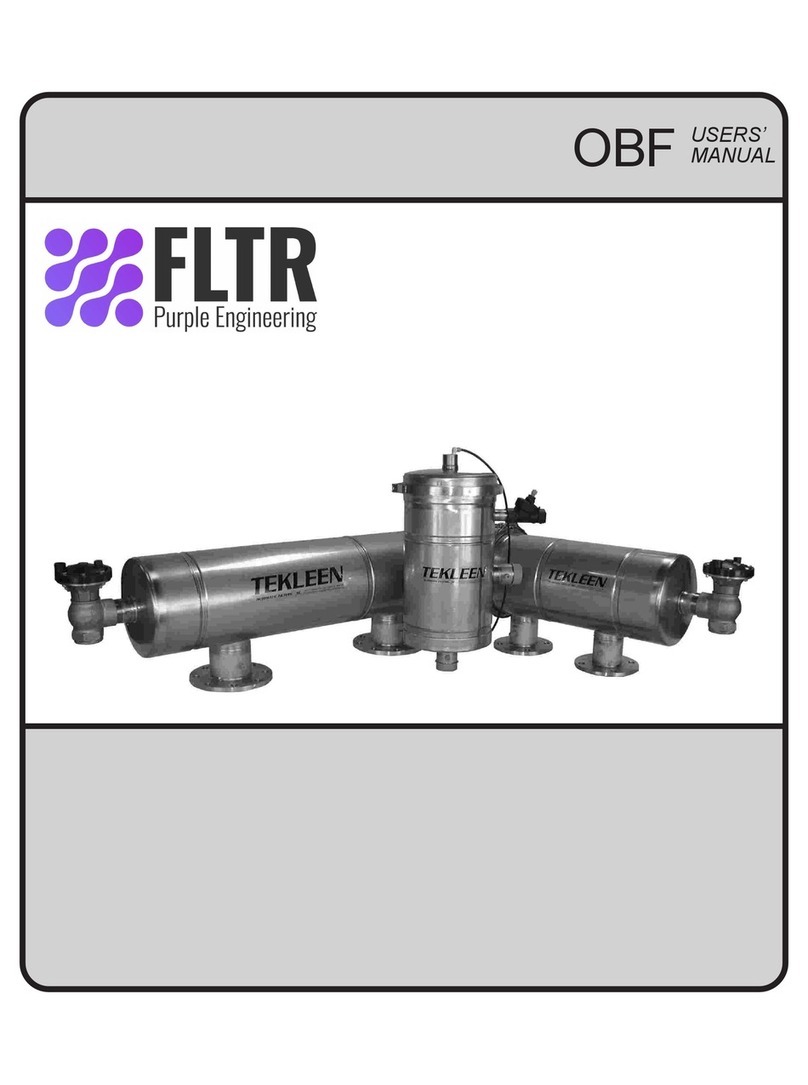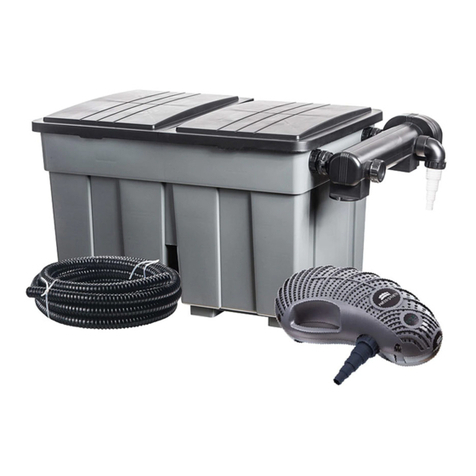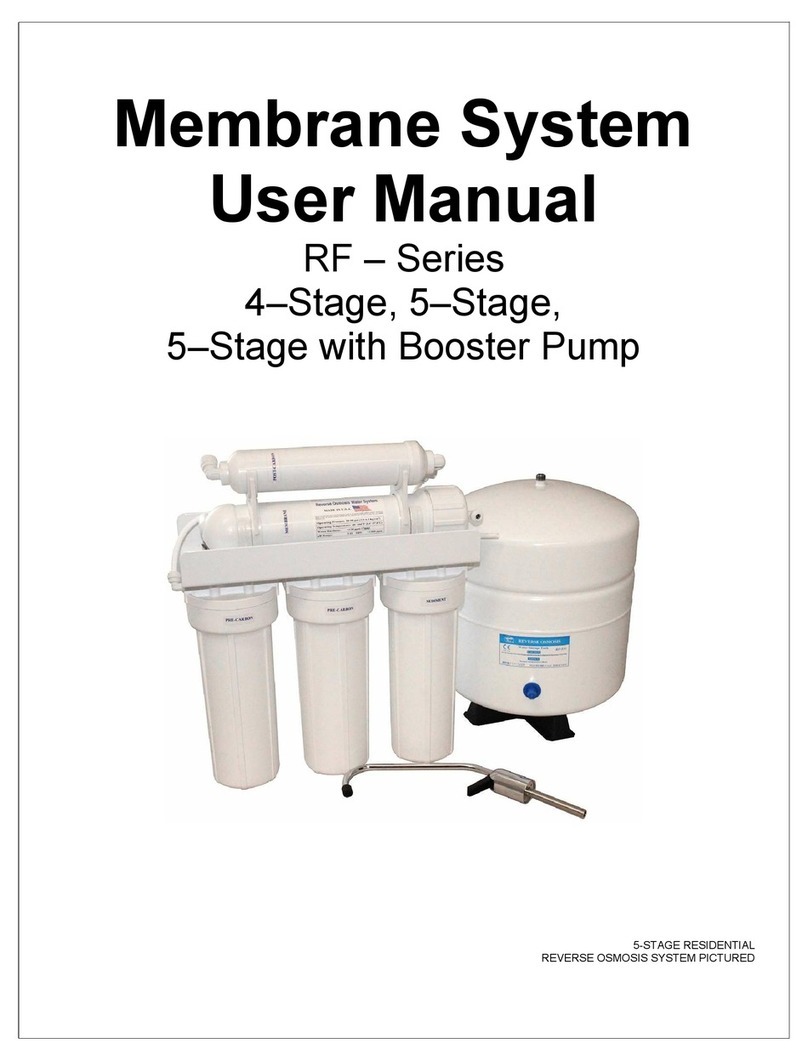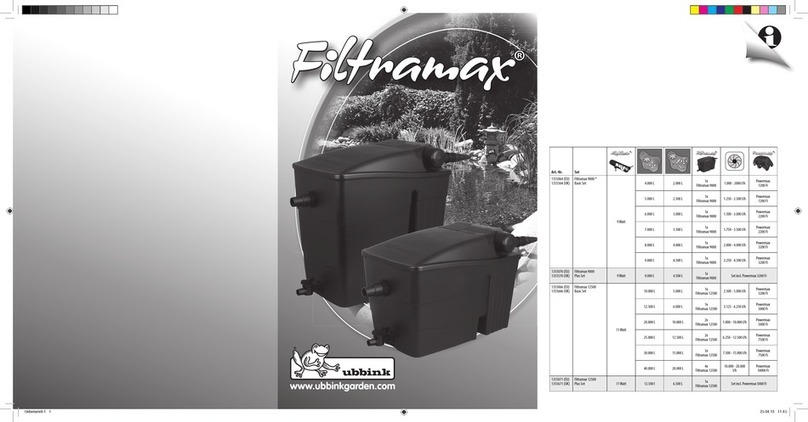
231135 rev.3 2019-06-26
Drester GP Filter eQ
4. Turn off WW Main Switch
Ensure that the main switch on the wheel washer is
turned off. Confirm with “Enter” on the GP Filter eQ
display.
5. Refill Flocculation Powder and Replace Filter
Check the status of the filter and flocculation
powder and confirm with “Enter”.
6. Close Valve to level Tube on Filter eQ
This procedure ensures that air is not suctioned
via the level tube during the final part of water
discharge. Close the ball valve (see figure below,
position 15) then confirm with “Enter” on the display.
NOTE: Control questions listed above are not displayed
during a scheduled water change.
IMPORTANT: When automatic water change is
activated, the wheel washer will be emptied of water. To
avoid damaging the wheel washer immersion heaters,
the wheel washer must be turned off at the main switch
before activating or starting a scheduled discharge.
NOTE: Before starting an automatic water change, a
new filter bag must be mounted in GP Filter eQ and the
flocculation powder container filled.
NOTE: Since the wheel washer software is independent
from GP Filter eQ, the wheel washer will signal “water
change” (granulate collection) after a certain interval.
Depending on the type of wheel washer – delete the
water change reminder and/or set the water change
interval to the maximum number of washes, alternatively
disregard the wheel washer’s recommendations for water
change to take place. However, the amount of granules
should be checked at regular intervals to ensure that
the washing results are good (the amount of granules
decreases slightly during washing and handling).
Read more about how to perform a water change in the
previous section “Menu-Water Change” under “User
Interface”.
9.3.1.2 Activating Manual Water Change
When activating manual water change, the same
process as described in the previous section “Automatic
Water Change Activation” is performed.
9.3.1 Changing Water in the Wheel Washer
When the water is to be changed in the wheel washer,
GP Filter eQ should be used for draining and filtering
the water. This should be done at least once per season,
depending on the number of washed wheels and how
dirty the wheel wash water is (and therefore the wash
result). As a rule, up to 5000 wheels can be washed
before the water in the wheel washer needs to be
changed. Shorter water change intervals can always be
scheduled because GP Filter eQ automatically empties
the wheel washer after activating the water change.
This process means that the wheel washer is emptied of
water in 15 litre increments. In total, the process takes
about 4 – 5 hours.
This process therefore replaces, to a large extent, the
“WATER CHANGE” chapter of the wheel washer manual
(which is essentially a manual process).
NOTE: The filtration process (water change) only
helps the cleaning of the wheel washer water. Any
accumulated dirt and residue inside the wheel washer
itself must therefore be removed manually.
9.3.1.1 Automatic Water Change Activation
Automatic draining of the wheel washer water can be
started directly via the menu system or programmed to
be performed at a specific time, e.g. evening when the
wheel washer is not being used or during a weekend.
See also “Menu - Water Change”.
After activating the water change, GP Filter eQ displays
the following control questions that need to be
confirmed before the process starts:
1. Start Water Change?
Confirm with “Enter” on the GP Filter eQ display.
2. Start Water Change and Follow Instructions in WW
menu
Initiate water change in the wheel washer menu.
Confirm with “Enter” on the GP Filter eQ display.
3. Granules collected?
Ensure that the granules in the wheel washer are
collected according to the procedure described
in the wheel washer manual. After completed
collection - Confirm with “Enter” on the GP Filter eQ
display.
10



























